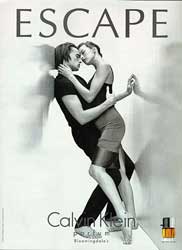
© 2019 Steve Campsall
STAGE THREE: HIERARCHY OF VALUES
The recognition of why we tend to judge one half of each binary pair more
positively can be attributed to the theorist,
Jacques Derrida.
- Derrida noticed that one
half of each binary pair is somehow culturally marked as being
more 'positive'
while its unmarked opposite is viewed less positively or even negatively.
- It seems it is natural (or is it cultural...?) to judge one
thing's meaning against another 'connected' thing's meaning and to
place the meanings within some kind of 'hierarchy of value'.
- Think of the following pairs
and see if you have any sense of one half of the binary pair being more
highly valued than the other in our society: loneliness/companionship;
rich/poor; man/woman;
West/East; normal/abnormal.
- This ‘privileging’ of one
half of each binary pair is said to work
through a system of ‘presence’ and ‘absence’. An example is to consider the
important ‘male/female’ binary pair. Freudian psychoanalytical theory (named
after the early 20th. century psychoanalyst, Sigmund Freud) proposed that the idea ‘man’
was historically – and stereotypically – ‘marked’ by a positive ‘presence’,
whereas the idea, ‘woman’ has been ‘marked’ by a negative ‘absence’.
- If you
consider a few labels or associations that have, at various times, been stereotypically
applied to men and women, you will begin to see how this works. Which label or
association would you say is positively marked, and which not?
- Why do you think it is the male side that seems to
attract so many "positively marked" descriptions?
| strong |
 |
weak |
| calm |
moody |
| dominant |
submissive |
| tough |
gentle |
| active |
passive |
| logical |
emotional |
| mind |
body |
| aggressive |
peaceful |
It's very important not to see these labels as real;
as with all meaning, they can exist only as cultural ideas, i.e. as ideologies. They
can certainly be said to represent reality but such labels
can never be more than a version
of reality. This is why they are ideological - they act to
reinforce judgmental and
hierarchical ways of thinking that might well seem
entirely natural, but which are
anything but. You can perhaps now begin to see how binary pairs can be extraordinarily powerful in reinforcing and maintaining
a society's ways of thinking.
- An interesting question to ask of a binary pair is who
in society ultimately benefits from people
'thinking that way'?
- Another question is to ask who in society works to reinforce such
binaries and why?
 |
In the man/woman binaries above, who has historically benefited
from these 'culturally marked' associations? If you look at many media images, do you think that such
binaries are still at work to help shape and create meaning?
|
 |
- Perhaps you can begin to see how ideologically important binary opposites
can be.



